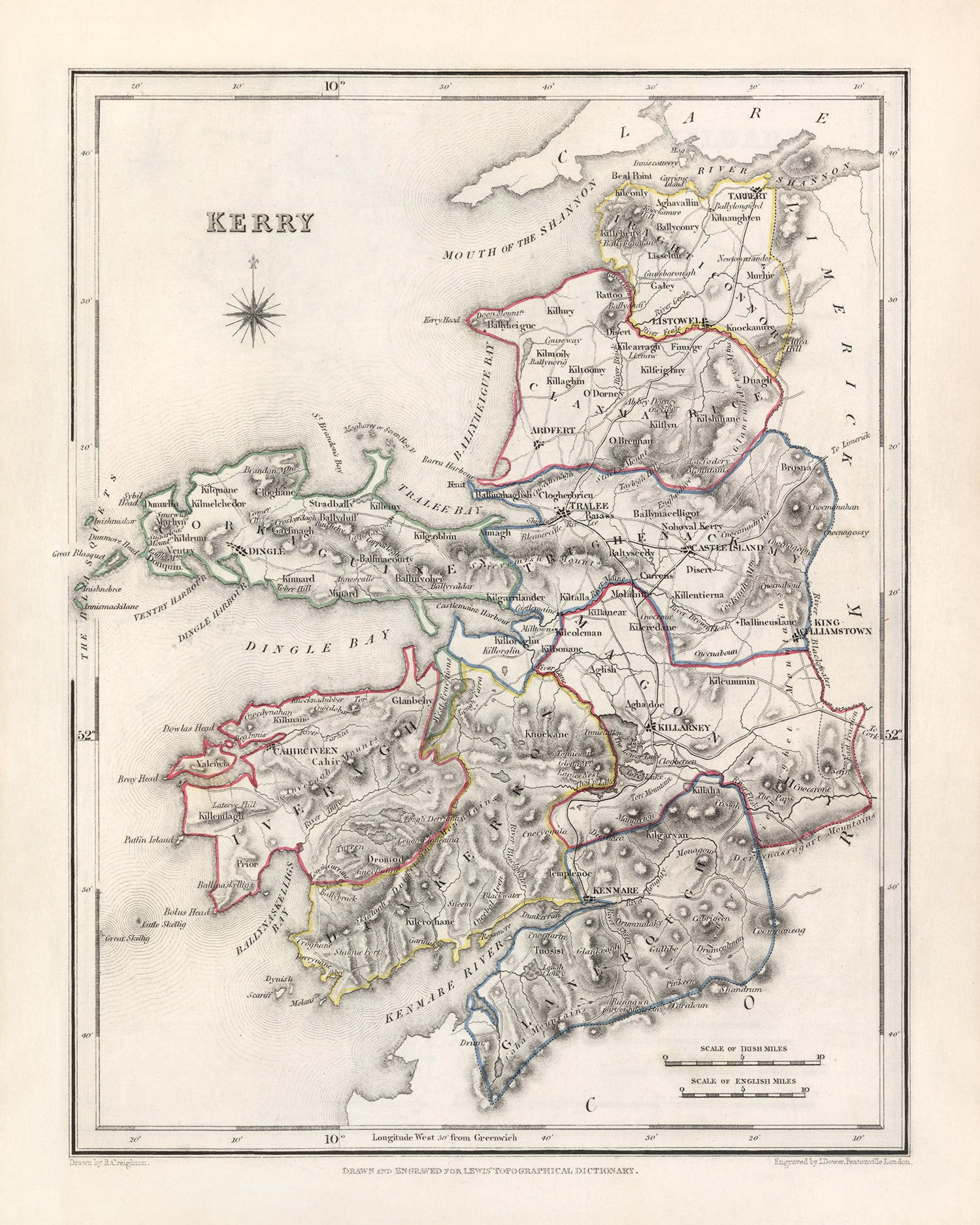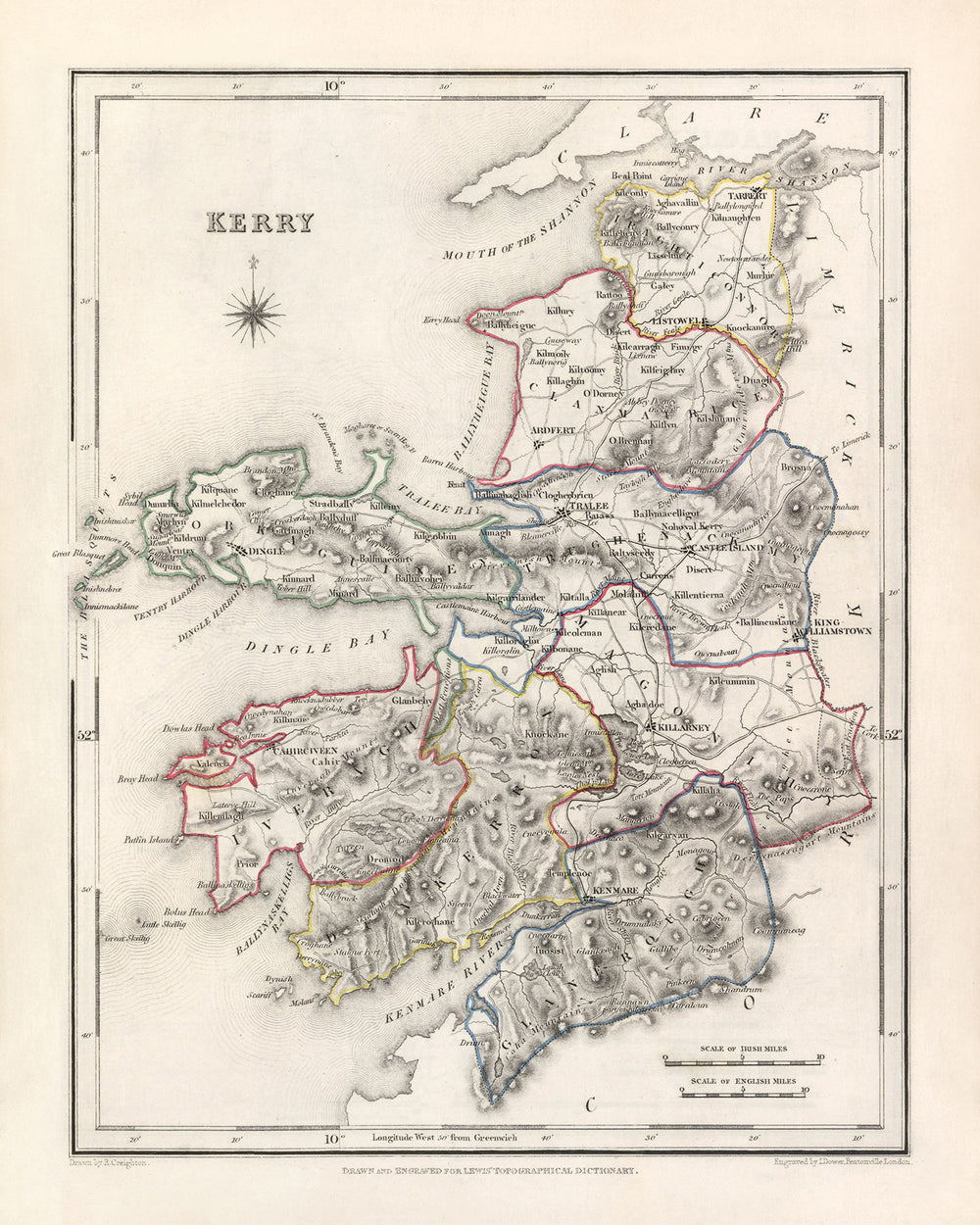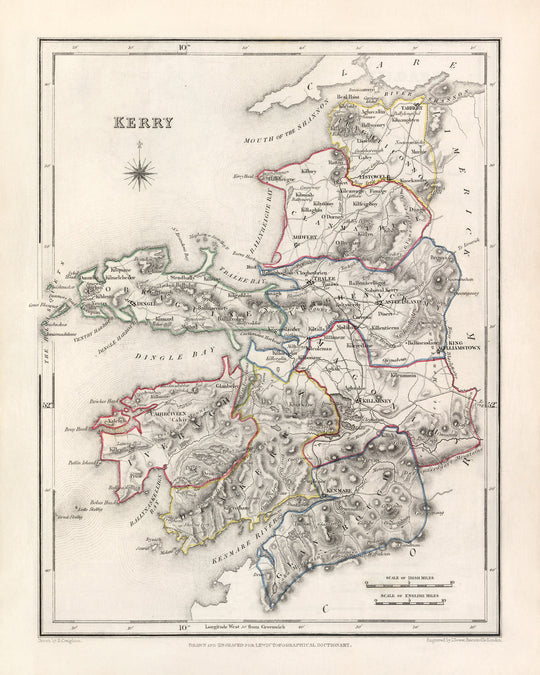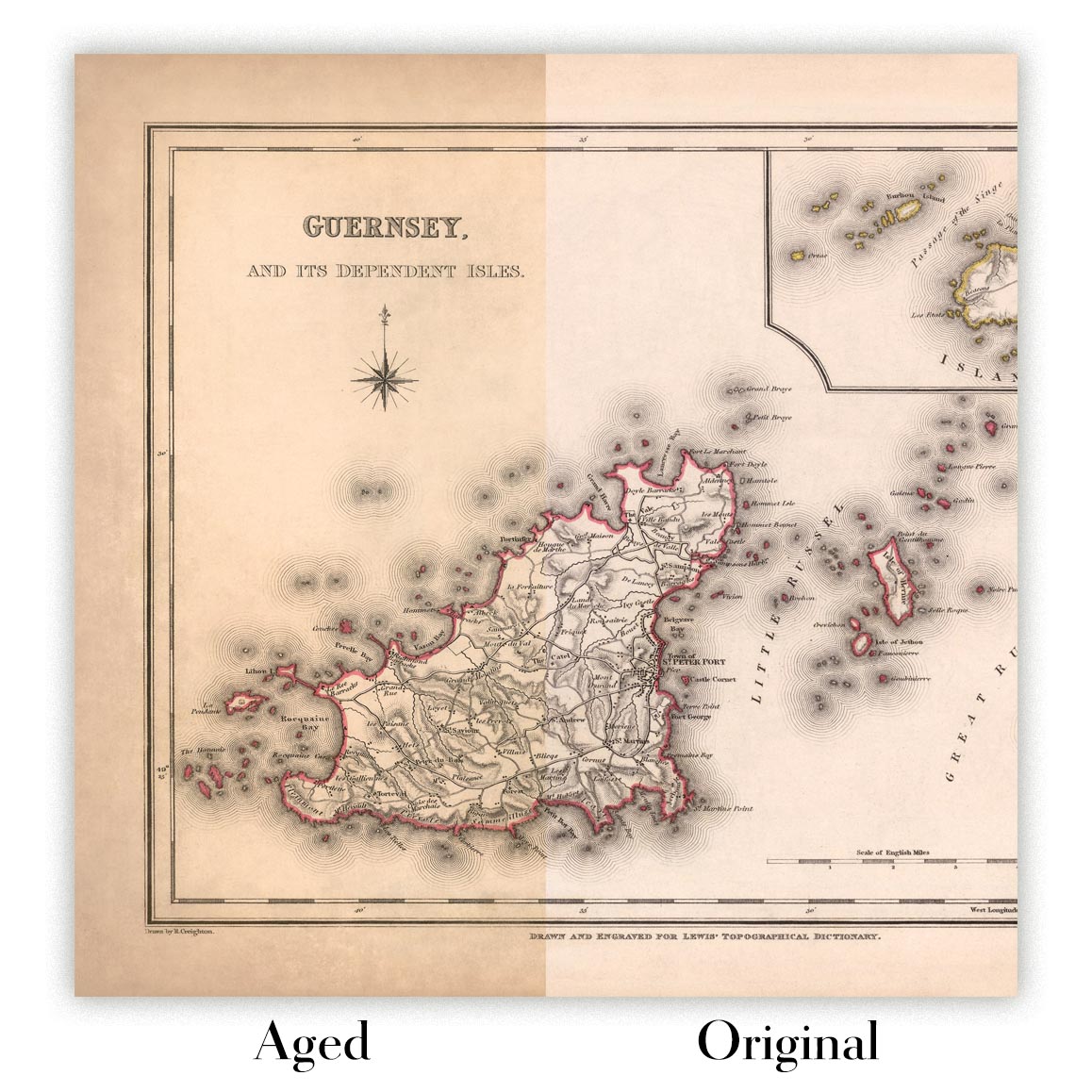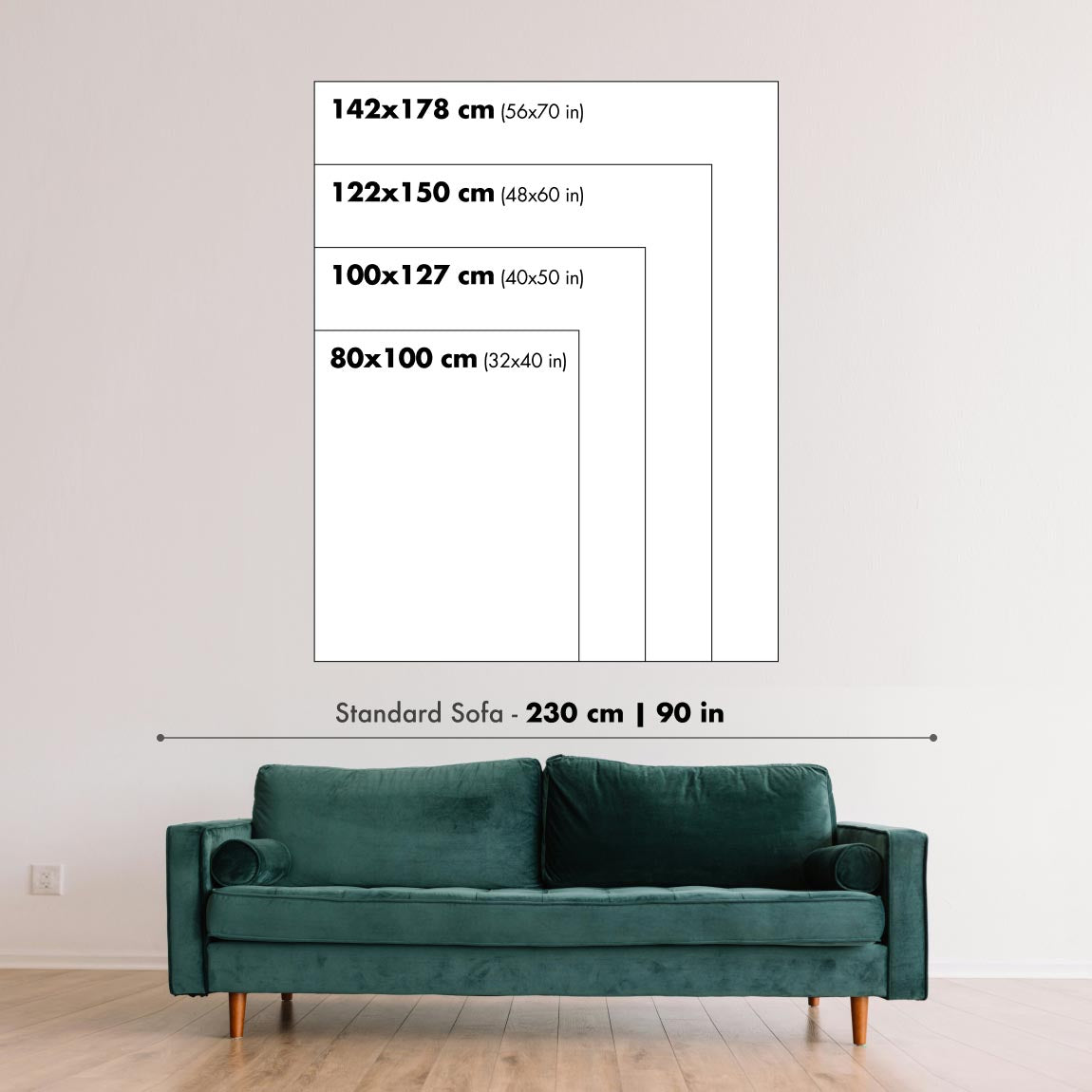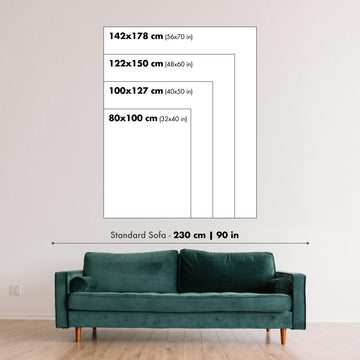- Handmade locally. No import duty or tax
- FREE worldwide delivery
- Love it or your money back (90 days)
- Questions? WhatsApp me any time
Own a piece of history
5,000+ 5 star reviews


This Old Map of Kerry by Samuel Lewis, dating back to 1844, offers a fascinating glimpse into the historical landscape of County Kerry, Ireland. With its intricate details and exquisite craftsmanship, this map is a true collector's item for history enthusiasts and cartography aficionados alike.
Featuring the main towns, cities, and other captivating landmarks of the time, this map provides a unique perspective on County Kerry's rich history. It is important to note that while some modern cities may not be depicted, or may appear under earlier names, this only adds to the allure and authenticity of this historical artifact.
Notable settlements founded before 1840 and located within the historical boundaries of County Kerry are as follows:
- Tralee (1216): As the county town of Kerry, Tralee is renowned for its vibrant culture, historical sites, and annual Rose of Tralee festival.
- Killarney (1602): Nestled amidst stunning natural beauty, Killarney is famous for its lakes, mountains, and as a gateway to Killarney National Park.
- Dingle (1200s): With its picturesque harbor and charming streets, Dingle is a popular tourist destination known for its traditional music and ancient archaeological sites.
- Kenmare (1670): Situated at the head of Kenmare Bay, Kenmare is celebrated for its scenic beauty, historic buildings, and vibrant arts scene.
- Listowel (1303): A town steeped in history and literature, Listowel is renowned for its annual Writers' Week and as the birthplace of playwright John B. Keane.
The remaining settlements founded before 1840 and located within the historical boundaries of County Kerry are:
- Cahersiveen (1579): A picturesque town with a rich maritime heritage, Cahersiveen is home to the impressive Ballycarbery Castle.
- Castleisland (1226): Known for its medieval castle ruins and vibrant market town atmosphere, Castleisland is a hub of activity in Kerry.
- Caherdaniel (1602): Nestled on the scenic Ring of Kerry, Caherdaniel offers breathtaking views of Derrynane Bay and is home to Derrynane House, the ancestral home of Daniel O'Connell.
- Killorglin (1200s): Famous for its annual Puck Fair, Killorglin is a lively town situated on the banks of the River Laune.
- Ballybunion (1300s): Renowned for its stunning beaches and historic castle ruins, Ballybunion is a popular seaside resort town.
- Caherciveen (1579): Located on the Ring of Kerry, Caherciveen boasts a rich history and is a gateway to Valentia Island.
- Lixnaw (1600s): A charming village with a strong Gaelic heritage, Lixnaw is known for its traditional music and friendly atmosphere.
- Abbeydorney (1200s): Home to the impressive Ardfert Cathedral ruins, Abbeydorney is a village steeped in medieval history.
- Sneem (1700s): Nestled on the scenic Ring of Kerry, Sneem is renowned for its colorful buildings and stunning natural surroundings.
- Ballyheigue (1200s): With its beautiful sandy beach and ancient castle ruins, Ballyheigue is a popular destination for beachgoers and history enthusiasts.
- Farranfore (1200s): Situated near Kerry Airport, Farranfore is a village known for its convenient location and access to the stunning Kerry countryside.
- Glenbeigh (1800s): Surrounded by majestic mountains and the picturesque Caragh Lake, Glenbeigh is a haven for outdoor enthusiasts.
- Castlegregory (1200s): Located on the stunning Dingle Peninsula, Castlegregory offers beautiful beaches, water sports, and a rich history.
- Ballyduff (1200s): Known for its strong hurling tradition and scenic location on the River Ballyduff, this village has a rich cultural heritage.
- Tarbert (1200s): Situated on the banks of the River Shannon, Tarbert is a historic port town with a fascinating maritime past.
- Ardfert (1200s): Home to the impressive ruins of Ardfert Cathedral and a round tower, Ardfert is a village with a rich ecclesiastical history.
- Beaufort (1800s): Surrounded by the stunning MacGillycuddy's Reeks mountain range, Beaufort is a gateway to the Gap of Dunloe and boasts breathtaking scenery.
- Ballylongford (1200s): A picturesque village with a strong literary heritage, Ballylongford is known for its annual Storytelling Festival.
- Kilflynn (1200s): Famous for its vibrant hurling tradition and lively pubs, Kilflynn is a village with a strong sense of community.
- Cromane (1600s): Situated on the scenic Ring of Kerry, Cromane is renowned for its fishing heritage and delicious seafood.
- Milltown (1600s): A charming village with a rich history, Milltown is located on the banks of the River Maine and offers scenic walks.
- Lispole (1700s): Nestled between the Slieve Mish Mountains and Dingle Bay, Lispole is a village with stunning natural surroundings.
- Annascaul (1200s): Surrounded by picturesque mountains, Annascaul is known for its links to Antarctic explorer Tom Crean.
- Fenit (1600s): A picturesque coastal village, Fenit is home to a bustling harbor and offers stunning views of Tralee Bay.
- Kilgarvan (1600s): Located in the scenic Roughty Valley, Kilgarvan is a village known for its traditional music and warm hospitality.
- Brosna (1600s): Situated on the border of Kerry and Limerick, Brosna is a village with a strong musical heritage and a lively pub culture.
- Kells (1200s): Steeped in history and folklore, Kells is home to the impressive Kells Priory and offers scenic walks along the River Dinin.
- Valentia Island (1200s): Connected to the mainland by a bridge, Valentia Island is known for its stunning cliffs, lighthouse, and transatlantic cable station.
Notable boundaries, rivers, canyons, national parks, and natural phenomena in County Kerry, Ireland include:
- Dingle Peninsula: Jutting out into the Atlantic Ocean, the Dingle Peninsula offers breathtaking coastal scenery, ancient archaeological sites, and the iconic Conor Pass.
- Ring of Kerry: A scenic driving route encircling the Iveragh Peninsula, the Ring of Kerry showcases stunning landscapes, charming villages, and historic sites.
- Killarney National Park: Home to the majestic Lakes of Killarney, ancient woodlands, and the iconic Torc Waterfall, Killarney National Park is a natural treasure.
- MacGillycuddy's Reeks: Ireland's highest mountain range, the MacGillycuddy's Reeks boast towering peaks, including Carrauntoohil, and offer challenging hiking opportunities.
- Gap of Dunloe: A narrow mountain pass between the MacGillycuddy's Reeks and Purple Mountain, the Gap of Dunloe is renowned for its stunning beauty and traditional horse-drawn jaunting cars.
Notable historical events in County Kerry, Ireland between 1800 and 1850 include:
- The Great Famine (1845-1852): County Kerry, like the rest of Ireland, was deeply affected by the devastating potato blight and subsequent famine, leading to widespread suffering and mass emigration.
- The Catholic Emancipation Act (1829): This landmark legislation granted Catholics in Ireland the right to vote and hold public office, marking a significant step towards religious equality.
- The Tithe War (1830-1836): A period of agrarian unrest, the Tithe War saw protests and violence against the payment of tithes to the Church of Ireland, contributing to a wider movement for land reform.
Owning this Old Map of Kerry by Samuel Lewis, 1844 allows you to immerse yourself in the historical landscape, discover the notable settlements of the time, and appreciate the natural beauty that has made County Kerry a renowned tourist destination to this day.
Please double check the images to make sure that a specific town or place is shown on this map. You can also get in touch and ask us to check the map for you.
This map looks great at all sizes: 12x16in (30.5x41cm), 16x20in (40.5x51cm), 18x24in (45.5x61cm), 24x30in (61x76cm), 32x40in (81.5x102cm) and 40x50in (102x127cm), but it looks even better when printed large.
I can create beautiful, large prints of this map up to 50in (127cm). Please get in touch if you're looking for larger, customised or different framing options.
The model in the listing images is holding the 16x20in (40.5x51cm) version of this map.
The fifth listing image shows an example of my map personalisation service.
If you’re looking for something slightly different, check out my main collection of UK and Ireland maps.
Please contact me to check if a certain location, landmark or feature is shown on this map.
This would make a wonderful birthday, Christmas, Father's Day, work leaving, anniversary or housewarming gift for someone from the areas covered by this map.
This map is available as a giclée print on acid free archival matte paper, or you can buy it framed. The frame is a nice, simple black frame that suits most aesthetics. Please get in touch if you'd like a different frame colour or material. My frames are glazed with super-clear museum-grade acrylic (perspex/acrylite), which is significantly less reflective than glass, safer, and will always arrive in perfect condition.
This map is also available as a float framed canvas, sometimes known as a shadow gap framed canvas or canvas floater. The map is printed on artist's cotton canvas and then stretched over a handmade box frame. We then "float" the canvas inside a wooden frame, which is available in a range of colours (black, dark brown, oak, antique gold and white). This is a wonderful way to present a map without glazing in front. See some examples of float framed canvas maps and explore the differences between my different finishes.
For something truly unique, this map is also available in "Unique 3D", our trademarked process that dramatically transforms the map so that it has a wonderful sense of depth. We combine the original map with detailed topography and elevation data, so that mountains and the terrain really "pop". For more info and examples of 3D maps, check my Unique 3D page.
For most orders, delivery time is about 3 working days. Personalised and customised products take longer, as I have to do the personalisation and send it to you for approval, which usually takes 1 or 2 days.
Please note that very large framed orders usually take longer to make and deliver.
If you need your order to arrive by a certain date, please contact me before you order so that we can find the best way of making sure you get your order in time.
I print and frame maps and artwork in 23 countries around the world. This means your order will be made locally, which cuts down on delivery time and ensures that it won't be damaged during delivery. You'll never pay customs or import duty, and we'll put less CO2 into the air.
All of my maps and art prints are well packaged and sent in a rugged tube if unframed, or surrounded by foam if framed.
I try to send out all orders within 1 or 2 days of receiving your order, though some products (like face masks, mugs and tote bags) can take longer to make.
If you select Express Delivery at checkout your order we will prioritise your order and send it out by 1-day courier (Fedex, DHL, UPS, Parcelforce).
Next Day delivery is also available in some countries (US, UK, Singapore, UAE) but please try to order early in the day so that we can get it sent out on time.
My standard frame is a gallery style black ash hardwood frame. It is simple and quite modern looking. My standard frame is around 20mm (0.8in) wide.
I use super-clear acrylic (perspex/acrylite) for the frame glass. It's lighter and safer than glass - and it looks better, as the reflectivity is lower.
Six standard frame colours are available for free (black, dark brown, dark grey, oak, white and antique gold). Custom framing and mounting/matting is available if you're looking for something else.
Most maps, art and illustrations are also available as a framed canvas. We use matte (not shiny) cotton canvas, stretch it over a sustainably sourced box wood frame, and then 'float' the piece within a wood frame. The end result is quite beautiful, and there's no glazing to get in the way.
All frames are provided "ready to hang", with either a string or brackets on the back. Very large frames will have heavy duty hanging plates and/or a mounting baton. If you have any questions, please get in touch.
See some examples of my framed maps and framed canvas maps.
Alternatively, I can also supply old maps and artwork on canvas, foam board, cotton rag and other materials.
If you want to frame your map or artwork yourself, please read my size guide first.
My maps are extremely high quality reproductions of original maps.
I source original, rare maps from libraries, auction houses and private collections around the world, restore them at my London workshop, and then use specialist giclée inks and printers to create beautiful maps that look even better than the original.
My maps are printed on acid-free archival matte (not glossy) paper that feels very high quality and almost like card. In technical terms the paper weight/thickness is 10mil/200gsm. It's perfect for framing.
I print with Epson ultrachrome giclée UV fade resistant pigment inks - some of the best inks you can find.
I can also make maps on canvas, cotton rag and other exotic materials.
Learn more about The Unique Maps Co.
Map personalisation
If you're looking for the perfect anniversary or housewarming gift, I can personalise your map to make it truly unique. For example, I can add a short message, or highlight an important location, or add your family's coat of arms.
The options are almost infinite. Please see my map personalisation page for some wonderful examples of what's possible.
To order a personalised map, select "personalise your map" before adding it to your basket.
Get in touch if you're looking for more complex customisations and personalisations.
Map ageing
I have been asked hundreds of times over the years by customers if they could buy a map that looks even older.
Well, now you can, by selecting Aged before you add a map to your basket.
All the product photos you see on this page show the map in its Original form. This is what the map looks like today.
If you select Aged, I will age your map by hand, using a special and unique process developed through years of studying old maps, talking to researchers to understand the chemistry of aging paper, and of course... lots of practice!
If you're unsure, stick to the Original colour of the map. If you want something a bit darker and older looking, go for Aged.
If you are not happy with your order for any reason, contact me and I'll get it fixed ASAP, free of charge. Please see my returns and refund policy for more information.
I am very confident you will like your restored map or art print. I have been doing this since 1984. I'm a 5-star Etsy seller. I have sold tens of thousands of maps and art prints and have over 5,000 real 5-star reviews. My work has been featured in interior design magazines, on the BBC, and on the walls of dozens of 5-star hotels.
I use a unique process to restore maps and artwork that is massively time consuming and labour intensive. Hunting down the original maps and illustrations can take months. I use state of the art and eye-wateringly expensive technology to scan and restore them. As a result, I guarantee my maps and art prints are a cut above the rest. I stand by my products and will always make sure you're 100% happy with what you receive.
Almost all of my maps and art prints look amazing at large sizes (200cm, 6.5ft+) and I can frame and deliver them to you as well, via special oversized courier. Contact me to discuss your specific needs.
Or try searching for something!







